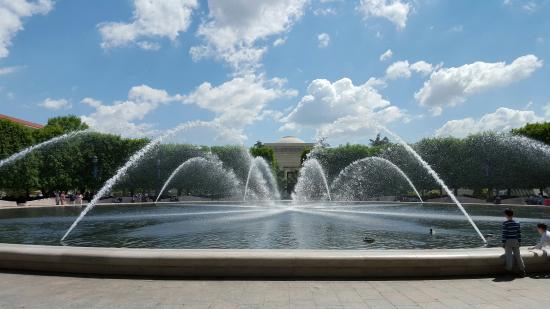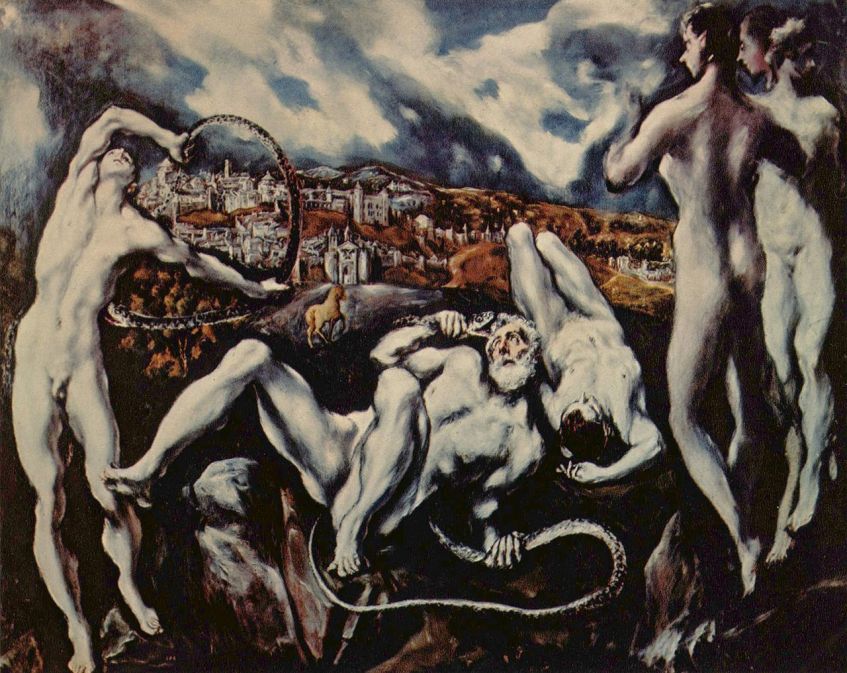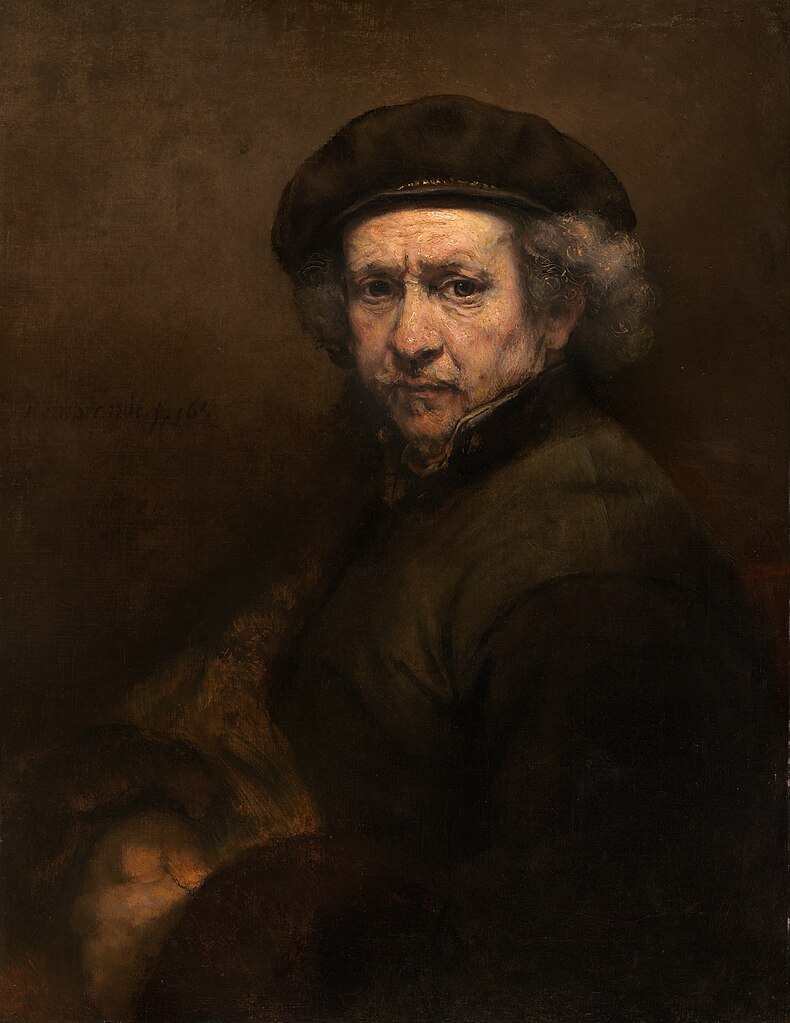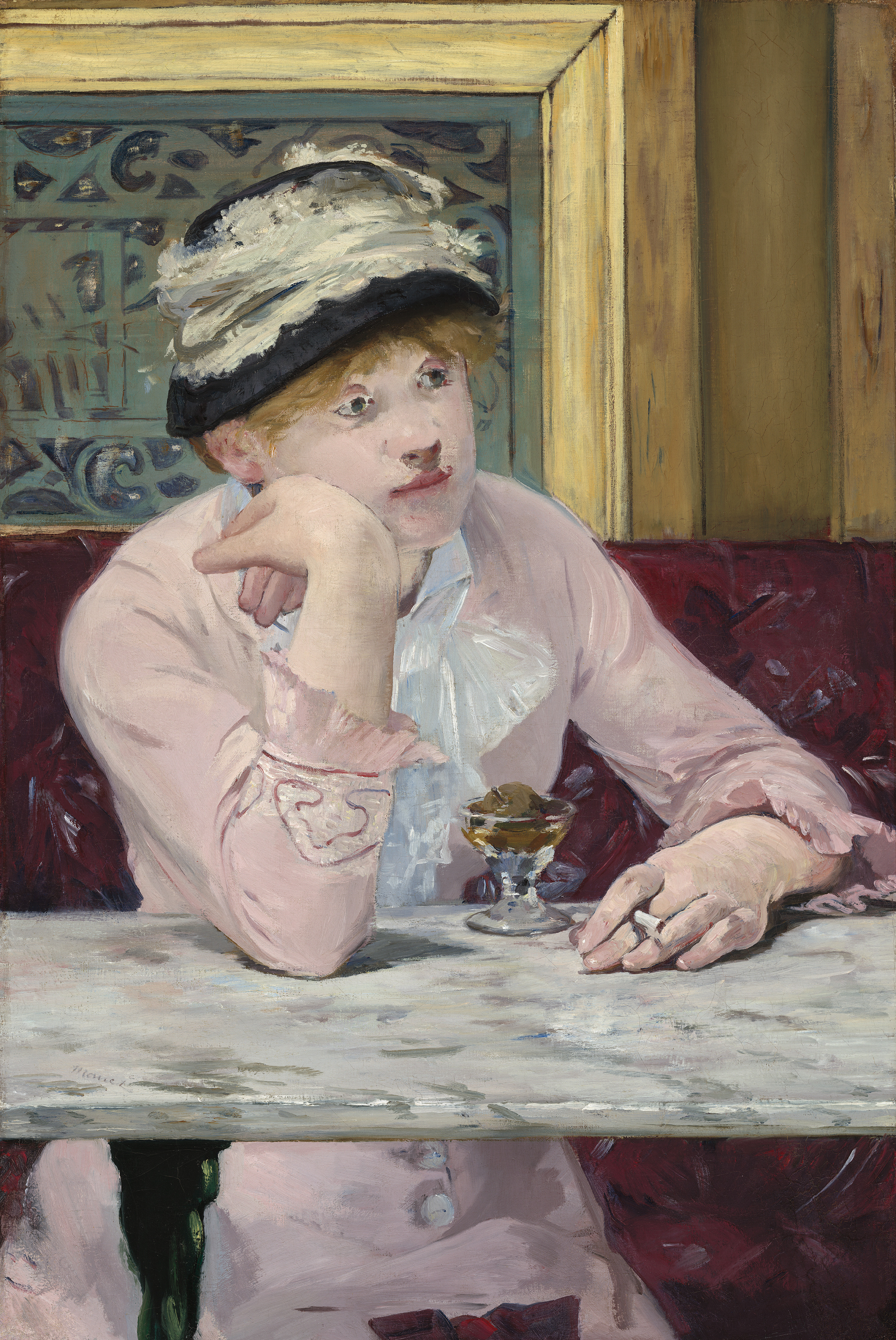Please wait ...
The National Gallery of Art, and its attached Sculpture Garden, is a national art museum in Washington, D.C., located on the National Mall, between 3rd and 9th Streets, at Constitution Avenue NW. Open to the public and free of charge, the museum was privately established in 1937 for the American people by a joint resolution of the United States Congress.

The Gallery's collection of paintings, drawings, prints, photographs, sculpture, medals, and decorative arts traces the development of Western Art from the Middle Ages to the present, including the only painting by Leonardo da Vinci in the Americas and the largest mobile created by Alexander Calder.
The Gallery's campus includes the original neoclassical West Building designed by John Russell Pope, which is linked underground to the modern East Building, designed by I. M. Pei, and the 6.1-acre (25,000 m2) Sculpture Garden. The Gallery often presents temporary special exhibitions spanning the world and the history of art. It is one of the largest museums in North America.
The museum comprises two buildings: the West Building (1941) and the East Building (1978) linked by an underground passage. The West Building, composed of pink Tennessee marble, was designed in 1937 by architect John Russell Pope in a neoclassical style (as is Pope's other notable Washington, D.C. building, the Jefferson Memorial).

Oculus of the West Building dome
Designed in the form of an elongated H, the building is centered on a domed rotunda modeled on the interior of the Pantheon in Rome. Extending east and west from the rotunda, a pair of skylit sculpture halls provide its main circulation spine. Bright garden courts provide a counterpoint to the long main axis of the building.
Center of West Building plaza
The West Building has an extensive collection of paintings and sculptures by European masters from the medieval period through the late 19th century, as well as pre-20th century works by American artists. Highlights of the collection include many paintings by Jan Vermeer, Rembrandt van Rijn, Claude Monet, Vincent van Gogh, and Leonardo da Vinci.

East Building atrium
In contrast, the design of the East Building by architect I. M. Pei is geometrical, dividing the trapezoidal shape of the site into two triangles: one isosceles and the other a smaller right triangle. The space defined by the isosceles triangle came to house the museum's public functions. The portion outlined by the right triangle became the study center. The triangles in turn became the building's organized motif, echoed and repeated in every dimension.
Fountain in West Building plaza
The building's central feature is a high atrium designed as an open interior court that is enclosed by a sculptural space spanning 16,000 square feet (1,500 m2). The atrium is centered on the same axis that forms the circulation spine for the West Building and is constructed in the same Tennessee marble.

Southwest corner of East Building during renovation, looking northeast
The two buildings are connected by a walkway beneath 4th street, called "the Concourse" on the museum's map. In 2008, the National Gallery of Art commissioned American artist Leo Villareal to transform the Concourse into an artistic installation. Today, Multiverse is the largest and most complex light sculpture by Villareal featuring approximately 41,000 computer-programmed LED nodes that run through channels along the entire 200-foot (61 m)-long space. The concourse also includes the food court and a gift shop.

Moving walkway and light sculpture in concourse beneath 4th Street connecting East and West Buildings
The final element of the National Gallery of Art complex, the Sculpture Garden was completed in 1999 after more than 30 years of planning. To the west of the West Building, on the opposite side of Seventh Street, the 6.1 acres (2.5 ha) Sculpture Garden was designed by landscape architect Laurie Olin as an outdoor gallery for monumental modern sculpture.

Sculpture garden
The Sculpture Garden contains plantings of Native American species of canopy and flowering trees, shrubs, ground covers, and perennials. A circular reflecting pool and fountain form the center of its design, which arching pathways of granite and crushed stone complement. (The pool becomes an ice-skating rink during the winter.) The sculptures exhibited in the surrounding landscaped area include pieces by Marc Chagall, David Smith, Mark Di Suvero, Roy Lichtenstein, Sol LeWitt, Tony Smith, Roxy Paine, Joan Miró, Louise Bourgeois, and Hector Guimard.

The NGA's collection galleries and Sculpture Garden display European and American paintings, sculpture, works on paper, photographs, and decorative arts. Paintings in the permanent collection date from the Middle Ages to the present. The Italian Renaissance collection includes two panels from Duccio's Maesta, the tondo of the Adoration of the Magi by Fra Angelico and Filippo Lippi, a Botticelli work on the same subject, Giorgione's Allendale Nativity, Giovanni Bellini's The Feast of the Gods, Ginevra de' Benci (the only painting by Leonardo da Vinci in the Americas) and groups of works by Titian and Raphael.

Rogier van der Weyden, Portrait of a Lady, c. 1460

Giorgione, Adoration of the Shepherds, c. 1500

El Greco, Laocoön, 1604–16

Giovanni Bellini and Titian, The Feast of the Gods, c. 1514

Rembrandt van Rijn, Self Portrait with Beret and Turned-Up Collar, 1659
The collection of sculpture and decorative arts includes such works as the Chalice of Abbot Suger of St-Denis and a collection of work by Auguste Rodin and Edgar Degas. Other highlights of the permanent collection include the second of the two original sets of Thomas Cole's series of paintings titled The Voyage of Life, (the first set is at the Munson-Williams-Proctor Arts Institute in Utica, New York) and the original version of Watson and the Shark by John Singleton Copley (two other versions are in the Museum of Fine Arts, Boston and the Detroit Institute of Arts).

Johannes Vermeer, A Lady Writing a Letter, 1665-1666
Eugène Delacroix, Columbus and His Son at La Rábida, 1838
Édouard Manet, The Old Musician, 1862

Édouard Manet, The Plum, 1878

Paul Cézanne, Boy in a Red Waistcoat, 1888–1890
The National Gallery's print collection comprises 75,000 prints, in addition to rare illustrated books. It includes collections of works by Albrecht Dürer, Rembrandt, Giovanni Battista Piranesi, William Blake, Mary Cassatt, Edvard Munch, Jasper Johns, and Robert Rauschenberg. The collection began with 400 prints donated by five collectors in 1941. In 1942, Joseph E. Widener donated his entire collection of nearly 2,000 works. In 1943, Lessing Rosenwald donated his collection of 8,000 old master and modern prints; between 1943 and 1979, he donated almost 14,000 more works. In 2008, Dave and Reba White Williams donated their collection of more than 5,200 American prints.

Francis Picabia, The Procession, Seville, 1912

Albert Gleizes, Les Joueurs de football (Football Players), 1912–13

Pablo Picasso, Still Life, 1918
The alba madonna by raphael